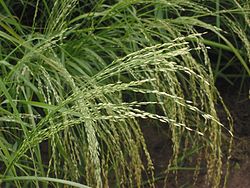
This is a list of Ethiopian and Eritrean dishes and foods. Ethiopian and Eritrean cuisines characteristically consists of vegetable and often very spicy meat dishes, usually in the form of wat (also w'et, wot or tsebhi), a thick stew, served atop injera , a large sourdough flatbread, [1] which is about 50 centimeters (20 inches) in diameter and made out of fermented teff flour. [1] Ethiopians and Eritreans eat exclusively with their right hands, using pieces of injera to pick up bites of entrées and side dishes. [1] Utensils are rarely used with Ethiopian and Eritrean cuisine.








